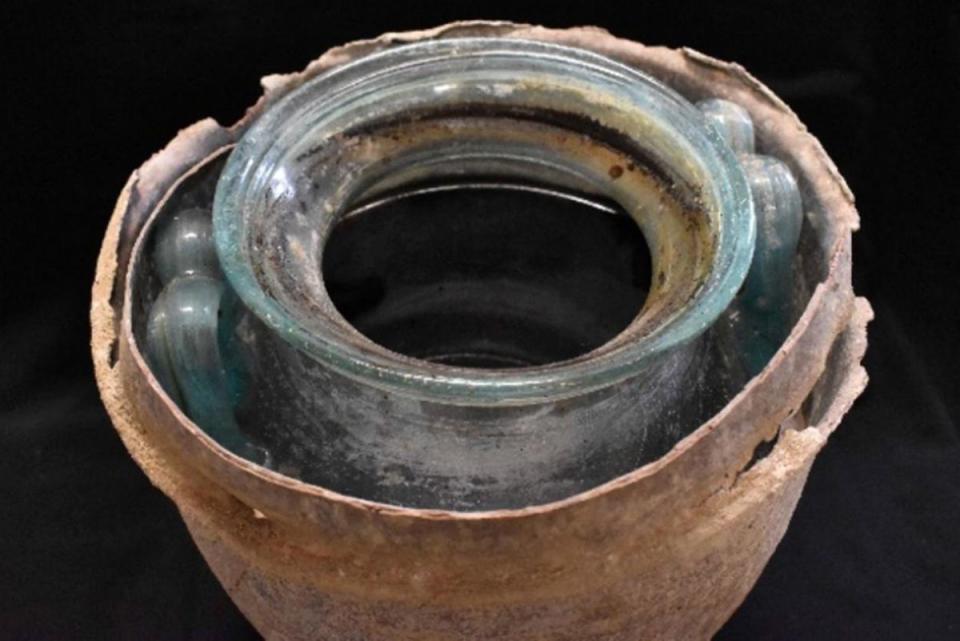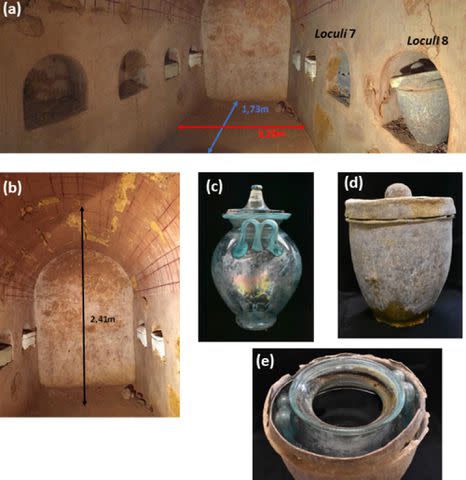World
Scientists Discover World’s Oldest Wine, a 2000-Year-Old White Wine that Contains a Man’s Ashes

Scientists discovered a 2000-year-old white wine inside an urn that also contained a man’s ashes in a Roman tomb in Spain

Juan Manuel Roman/ Journal of Archaeological Science
Worlds Oldest Wine discovered in an urn
Researchers have discovered the world’s oldest wine in a Roman burial site in Spain. The drink contains a surprising ingredient – a man’s cremains.
On June 18, researchers at the University of Córdoba published in the Journal of Archaeological Science: Reports that they discovered a 2,000-year-old wine — the world’s oldest known wine — inside a funeral urn in an ancient tomb in Carmona, a southwestern town in Spain.
According to the press release from the university, scientists confirmed that cremated “skeletal remains of one of the men were submerged in a liquid inside a glass funerary urn,” and the wine was likely used “as part of that [burial] ritual.”


Juan Manuel Roman/ Journal of Archaeological Science
Location of the world’s oldest wine, found in a Roman tomb in Spain
Related: Archaeologists Examining ‘Extremely Rare’ 1,300-Year-Old Ship They Need to Water Every 30 Minutes
Juan Manuel Románm, the municipal archaeologist of the Carmona City Council, explained in the news release that they “were very surprised that liquid was preserved in one of the funerary urns” for so long.
In the report, scientists said that “given the religious significance of wine in the ancient Roman world, where it was highly symbolic and closely related to burial rituals, it is unsurprising to find vessels that might have originally contained wines among burial furnishings.”
Scientists also confirmed through chemical testing that the urn contained white wine that had turned reddish-brown over the years. The wine was reportedly inside the tomb since around the first century, and the tomb was well-sealed, allowing the wine “to maintain its natural state.”
The Roman tomb was first discovered in 2019 when a family accidentally found the site while having work done in their home. The university shared in its news release that the tomb was “a circular mausoleum that probably housed a [high power] family” and contained other trinkets like jewels, silk fabric, and a patchouli-scented perfume. These items were essentials “that would accompany the deceased on their journey to the afterlife.”
“In ancient Rome, as in other societies, death had a special meaning, and people wanted to be remembered to, in some way, stay alive,” the university said in their news release.
Never miss a story — sign up for PEOPLE’s free daily newsletter to stay up-to-date on the best of what PEOPLE has to offer, from celebrity news to compelling human interest stories.
Related: Pompeii Archaeologists Discover 2,000-Year-Old Painting Featuring Pizza-Like Dish
The university also noted that it was not coincidental that the urn contained a man’s remains since “women in ancient Rome were prohibited from tasting wine.”
“The urn containing the remains of a woman did not have a single drop of wine in it,” researchers explained. “The two glass urns in Carmona’s tomb are an example of the gender division of Roman society and funerary rituals.”
Before the discovery of Roman wine in Spain, scientists thought the oldest wine in the world was from a bottle found in another Roman tomb in Speyer, Germany. The wine was discovered in “1867 and [was] dated to the 4th century.”
For more People news, make sure to sign up for our newsletter!
Read the original article on People.







:max_bytes(150000):strip_icc()/roundup-writereditor-loved-deals-tout-f5de51f85de145b2b1eb99cdb7b6cb84.jpg)


